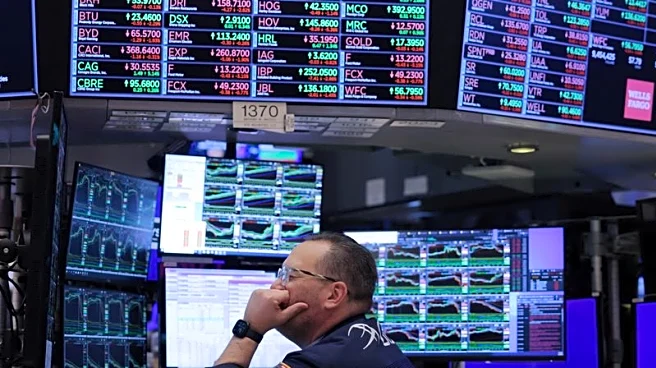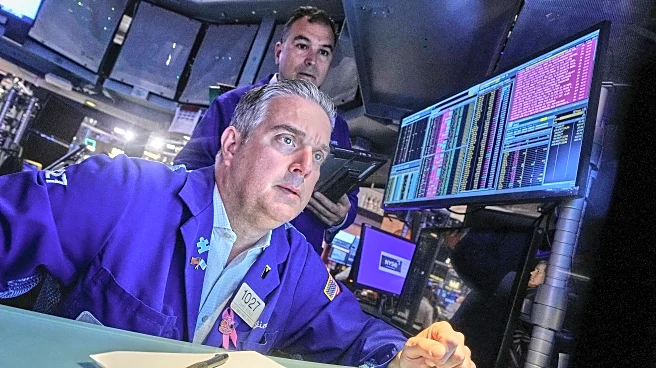What's Happening?
Gold prices have surged to $4,365 per ounce, driven by rising US-China trade tensions and the ongoing US government shutdown. This marks a significant increase of 19.10% over the past month and 61.83% compared to the same time last year. The surge is supported
by central bank buying, expectations of rate cuts, and heightened geopolitical risks. JP Morgan had previously predicted gold prices to average $3,675 per ounce by the fourth quarter of 2025, but the current prices have surpassed these expectations. The sentiment for gold remains positive, with global interest continuing to rise.
Why It's Important?
The increase in gold prices reflects broader economic uncertainties and geopolitical tensions, particularly between the US and China. As investors seek safe havens, gold becomes a preferred asset, impacting financial markets and investment strategies. The rise in gold prices can affect various stakeholders, including investors, businesses involved in gold trading, and consumers purchasing gold products. Additionally, the Federal Reserve's monetary policy decisions, such as potential rate cuts, could further influence gold's value and market dynamics.
What's Next?
ANZ forecasts that gold prices will reach $4,400 per ounce by the end of 2025, with a peak near $4,600 per ounce by June 2026. This suggests continued volatility and potential price increases in the gold market. Stakeholders, including investors and policymakers, will likely monitor these developments closely, considering the implications for economic stability and investment strategies. The ongoing geopolitical tensions and economic uncertainties may continue to drive demand for gold as a safe asset.
Beyond the Headlines
The surge in gold prices highlights the interconnectedness of global economic and geopolitical factors. It underscores the role of gold as a barometer for investor sentiment and economic health. The situation also raises questions about the long-term impact of trade tensions and government policies on global markets and economic stability.















